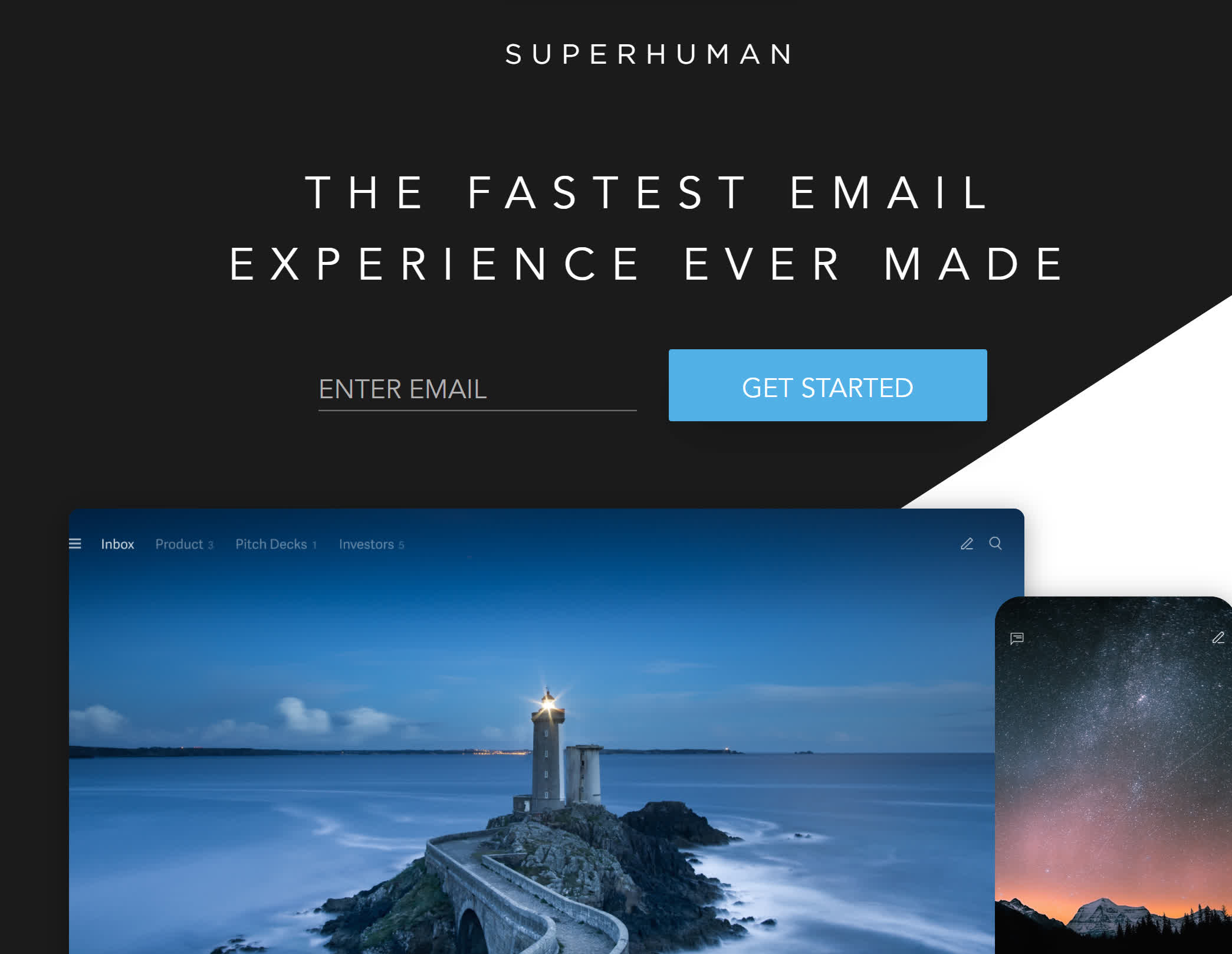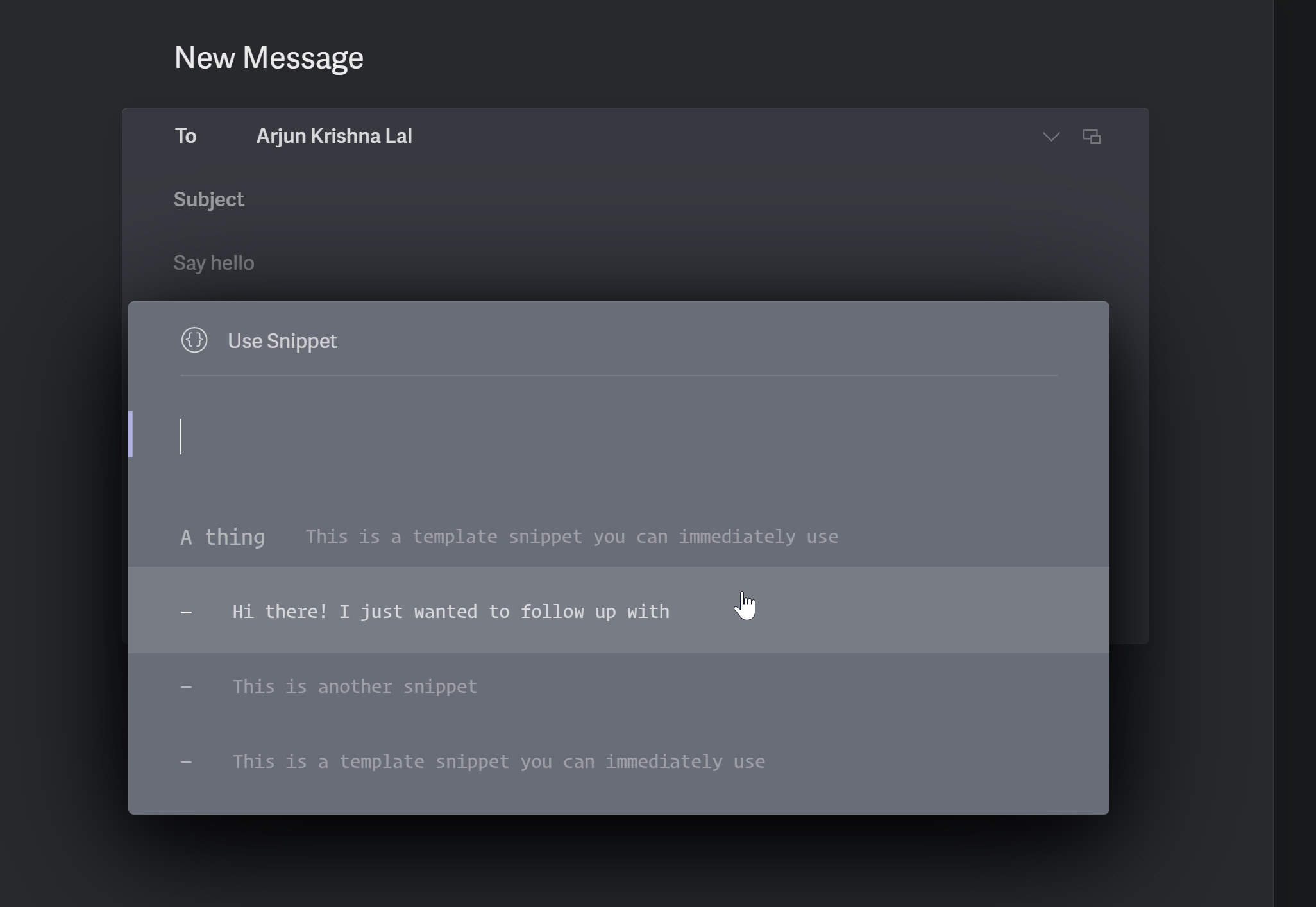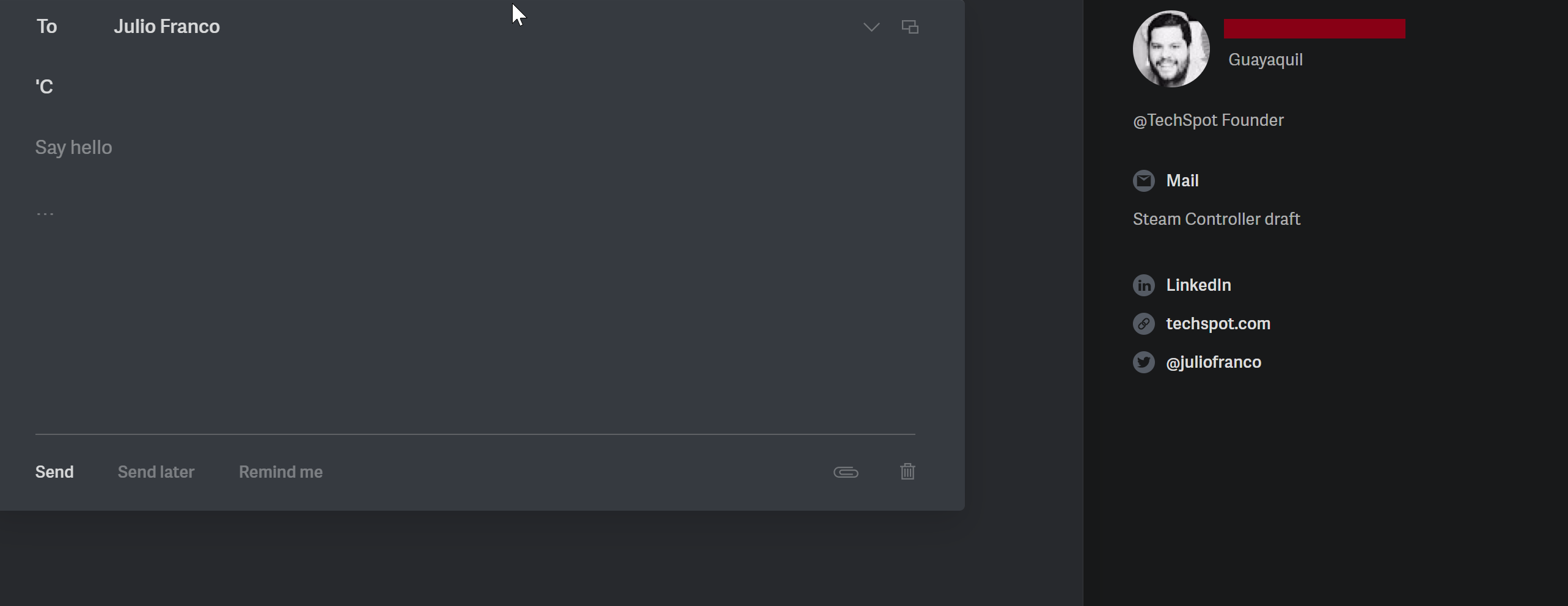For the past two months, I've been using Superhuman, an invite-only email client Silicon Valley startup owners swear by. With a wait list that's 250,000 users long, Superhuman's creator Rahul Vohra touts it as "Gmail, if it'd been built today, not a decade ago."
With built-in natural language processing, and the promise of the "100ms rule" – making all functions accessible in a fraction of a second – Superhuman definitely has a lot going for it. But at $30 per month for what's essentially an app built on top of Gmail, it also raises questions about value.
Is it worth the hype? Is it the future of email or just another Gmail wannabe? And is it worth $360 a year? Let's find out.
An extreme onboarding process
Right now, the key question with Superhuman isn't whether or not you should use it: it's whether or not you can. The email client has been feature-complete for years now. However, it's still in a closed, invite-only beta. Existing users can send invites to other interested people. However, the actual user base remains tiny. Around 20,000 people are on Superhuman at the moment. The waiting list is over ten times as large.
It's very much a "who you know" type of situation. How did I get an invite? I'm the Director of Content at an LA-based digital marketing agency and work with people in the Silicon Valley startup ecosystem. I saw someone using Superhuman during a Zoom call and shamelessly asked for an invite.
With an invite-only closed beta, you'd think getting an invite was the hard part, right? Not even close. Getting a Superhuman invite is only the first step. Next, there's an entire, grueling onboarding process, seemingly designed to winnow out people who don't fit a particular user profile. You'll need to fill out a workflow questionnaire, with details about your job role and how you use email.
This isn't just for user feedback, or even to customize the Superhuman experience to meet your needs. If you don't fit the "right" profile, or if currently use email in ways Superhuman doesn't support (if you have a unified inbox set up, for example), that's as far as you get. Some of these questions are oddly specific - you'll need to tell Superhuman whether or not you use an SSD, and the year your PC was built in, for instance.
The questionnaire went fairly smoothly for me: I'm a decision-maker at a medium-sized company. I get lots of emails. I do have an SSD (or three), and no, I don't use a unified inbox. Got the invite? Great. Passed the special person test? Fantastic, but you still don't get to use Superhuman. At the end of all that, I was sent an invite for an onboarding call.
You'll need to dial in a 30-minute onboarding call through Calendly, first. Because the Superhuman team is California-based, it can be tough to find a time slot that works. After a lot of back and forth waffling - which involved Superhuman cancelling a call because we got on a few minutes late, I finally managed to get a free slot - at around 12am local time. By then, I was exhausted, incredibly annoyed, but also oddly fascinated: what the heck kind of an app makes you jump through this many hoops? What could possibly be worth going through all this? I got on my 12am Zoom call with Nola* (name changed) from Superhuman. And in around five minutes, things became more clear.
Special training needed: Coming to grips with Superhuman's way of doing things
It turns out that the onboarding call wasn't just another superfluous "exclusivity" step. Though it plugs into Gmail, Superhuman handles email in a fundamentally different way. The interface might appear similar enough at first glance, but there are major differences in how Superhuman "does" things.
As Nola explained, the key idea behind Superhuman is to hit what they like to call "inbox zero," when you have no pending, unattended emails left over. Everything about Superhuman's interface is designed to get you to "inbox zero" as quickly as possible.
Shortcuts and more: maximizing efficiency
One of the ways they do this is by emphasizing keyboard shortcuts. Shortcuts are everywhere in Superhuman and that's by design. While mouse interaction is present, it's more of a fallback. As Nola pointed out, pointing and clicking on UI icons takes considerably more time than just using shortcuts.
Coming from vanilla Gmail, this requires a bit of relearning. The shortcuts are fairly intuitive, however: you use the arrow keys to navigate inbox items. Enter gets you into a thread, while R gets you straight to reply. E marks a thread as "done." This takes it out of Superhuman inbox, whether or not you've replied to it – the idea here is to sort out conversations you're "done" with from the threads you need to focus on.
Superhuman even takes the idea of shortcuts down to the level of the text in your emails. The "Snippet" option allows you to create template phrases (for example, "I'd like to follow up with you.")
When you're typing out an email, press Ctrl + ; (semicolon) and you'll get a list of those snippets to instantly add in, saving time.
So far, so mildly interesting. It's when you hit Ctrl + K that Superhuman comes into its own. This key combo brings up the "command center," with a number of functions. But more interestingly, it lets you manually type in commands that Superhuman then parses using natural language processing (NLP). If you want to set a reminder about a particular message, for instance, you could type in something like "remind me tomorrow morning," and the app will take care of the rest.
With Superhuman placing so much emphasis on spam filtering, it's a good idea to understand how this is handled in-app. There are two levels of functionality here. Superhuman's built on Gmail, so it leverage's Gmail's own spam filtering algorithm to start off with. This means messages Google thinks are spam won't make their way into your inbox.
Superhuman discovers and serves up details about your email recipient: this can help when you're trying to customize cold marketing outreach
Where Superhuman differentiates itself is in terms of its instant unsubscribe feature. Pressing Ctrl+U on any email will automatically unsubscribe you from the list. You'll also get an option to trash or mark done every mail from a particular mailing list.
This is a great option if spam's piling up in your inbox. I have a lot of unopened mails and most of those are random spam messages. Sitting down with Superhuman and using Ctrl+U helped me get rid of thousands of spam messages in a couple minutes.
It's worth it... for some users
It might seem like a stretch to see Gmail with shortcuts for $30 a month, but that would be selling Superhuman short. The "inbox zero" focus places emphasis on actually getting work out of the way. Personally, it's saved me around 15-30 minutes a day where I'd otherwise be poring through a high volume of messages on Gmail. From a productivity point of view, that's 30 minutes that could be spent elsewhere, and is definitely worth more than Superhuman's $30/mo sticker price.
Does that make it worthwhile for everyone? Unless you're a business owner or in another role where you have potentially dozens of emails coming in per day, Superhuman simply will not add enough value to justify the asking price. It's about triaging in a situation where there's far too much email. If you get a mail or two a day, your standard Gmail inbox will continue to serve you well.
What does this mean for Superhuman?
Superhuman is a better, more seamless email experience than Gmail. There's no question about that. But in terms of value, it's hard to see it as a real competitor to Gmail or even other mail clients, the way things stand right now. For the majority of users, Superhuman does not offer enough functionality to justify its asking price.
What the competition looks like
This might seem obvious, but the real competition here comes from Gmail, the platform Superhuman's built on top of, and Microsoft Outlook. Other "Inbox replacement" apps, like June, Newton Mail, and Google's own Inbox have come and gone without staying relevant in the long-term.
Some of these offer a radically new email experience, even compared to Superhuman. For example, Spike transforms your email threads into a Slack-like instant messaging interface. June.ai, on the other hand, splits your inbox into person-to-person communication and business messaging. Up against an entire graveyard of also-ran email clients, does Superhuman have what it takes to succeed?
Investors seem to think so. Superhuman is currently valued at nearly $300 million and there's good reason for all the venture capital interest: a lot of the things it does, from those superpowered hotkeys to NLP processing represent the future of what "regular" mail clients will look like in 3-5 years. Google itself will likely double down on AI-based interactions in the inbox, and we wouldn't be surprised to see iterative Gmail updates that bring UI speed and capabilities closer to what Superhuman offers right now.
And while it's certainly exclusive in the here and now, we expect to see Superhuman targeting wider audiences in the years to come. The app already offers a discounted rate for teachers and students. The first thing that's likely to go on the back of all that VC funding? That $30 subscription price. But that's not all: As other mail clients power up their capabilities, Superhuman will need to stay a few steps ahead to justify its pricing and existence. But if it continues to grow, Superhuman could arguably find itself a long term niche as email's permanent beta version.
Masthead credit: Adam Solomon








